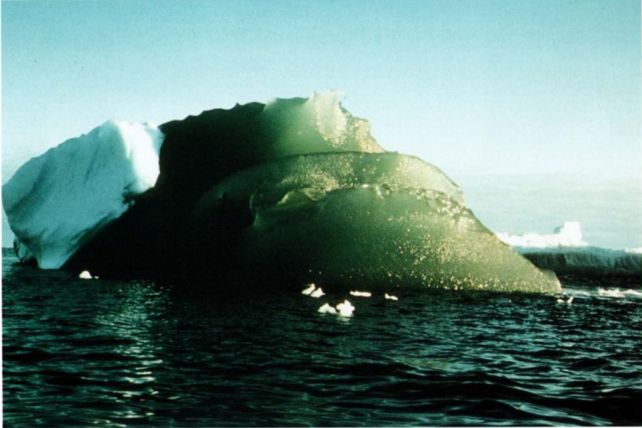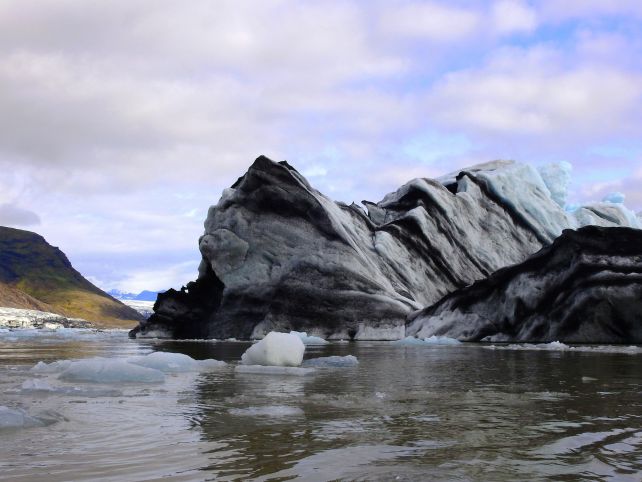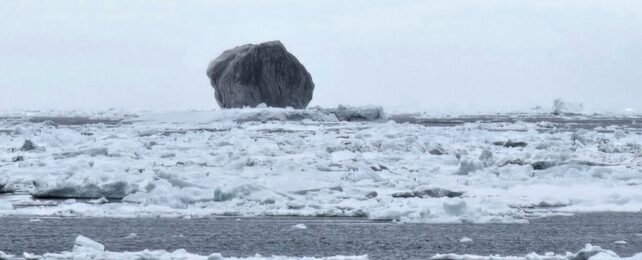A fisherman at sea off the coast of Canada recorded something that few humans have ever seen.
Floating serenely amid the pale ice chunks in the Labrador Sea was one iceberg that appeared as black as soot.
Hallur Antoniussen, aboard the fishing trawler Saputi in mid-May, was gobsmacked – but fortunately not too gobsmacked to capture the strange sight and post it to social media.
"I have seen icebergs that are rolled, what they say have rolled in the beach with some rocks in it. This one here is completely different. It's not only that he is all black. He is almost … in a diamond shape," he later told CBC Radio.
When you think of an iceberg, you probably imagine white boulders of ice floating in sub-zero waters, perhaps tinged in a spectrum of subtle hues in pale blue or blue-green. The truth is, however, that icebergs can get quite dark.
White icebergs appear so because they are filled with tiny trapped pockets of air that scatter all wavelengths of light.
As a chunk of ice ages, however, it becomes more compressed, pushing out air, allowing more light to penetrate, and becoming clear, like glass. Redder wavelengths are absorbed, but blue wavelengths are scattered, resulting in a bluer appearance.

Icebergs are not always just frozen water. Other materials can get mixed up in the ice as it forms. Greener icebergs, for example, contain iron oxides. These have a yellow hue; when they are mixed with the blue ice, they appear green.
And yes, other icebergs can have a black or dark grayish tint. This is often the result of dirt or other dark material that becomes bound up in the ice, sometimes as it rolls over a dark surface. As Antoniussen says, these icebergs look very different from the black chunk he saw in the Labrador Sea.
Another explanation, according to glaciologist Lev Tarasov of Memorial University in Canada, is that the black berg was once part of a larger glacier that broke off and fell into the ocean.
Glaciers grind along the ground as they move towards the ocean, stirring up a lot of debris that becomes mixed in with the ice. Tarasov saw smaller chunks of ice that exhibited this in Greenland.
It would take a long time for this debris to become as uniformly mixed through as it appears to be in Antoniussen's berg, suggesting that the chunk of ice is quite old – from 1,000 up to 100,000 years old, Tarasov told CBC.

Another possibility is that the ice became mixed with soot from a huge volcanic outburst, or even that the dark coloration is the result of debris from a meteorite strike.
We'll probably never know for sure, unless another, similar iceberg shows up – and a scientist is close enough to study it. Fingers crossed.
